September 2016/ True crime / reading time: 14 minutes (3460 words)
The librarian saw the outsider approach Ulla out of nowhere and ask her a question. The outsider asked Ulla if she wanted to hear a story. She said yes. Two months later Ulla was dead.
All original research by Dr Janne Mantykoski
Original artwork by Phil Barrett
Introduction
There have been times in my life when I’ve hidden away in stories to avoid facing up to challenges in my life. Times when a book or film or even fantasy life where everything works out was preferable to the muddle of life. But until recently I never really believed stories were dangerous. I never believed they could be addictive.
Not until my friend Dr Janne Mantykoski (Phd in Philosophy) told me about the non-fiction book he’s researching about the strange, barely believable story of Finland’s “Tarinankertoja” ie Storyteller. After much badgering, Janne agreed to let me summarise his work so far here, as long as I stick to the facts. Incidentally, this story is a sort of exclusive. It’s apparently never been covered in English-language media before, and barely even covered in Finland.
It all took place in the winter of 1992/93 in the tiny (and hard to spell) town of Suomussalmi in Finland which Janne visited in 2014 and 2015 to research his book.

Suomussalmi is more a collection of interconnected towns than one real town. In this area of northern Finland the coldest temperatures in winter can be -45°C to -50°C. Suomussalmi is a grim, impoverished, northern middle-of-nowhere place that even Finns have barely heard of, and mostly couldn’t find on a map. In the early 90s most employment came from forestry, wood pulp mills and a paper factory. And then it was hit by the major recession in Finland.

By mid-recession in 1992, the paper factory and most of the mills had closed. Its population experienced unemployment levels of 29% for adults and 42% for under 25-year-olds. There was a spike in theft and crime and much of the younger population emigrated to other parts of Finland or Europe. It looked like things couldn’t get any worse.
Then, in October 1992, the first of the three bodies was found.
The first body
The body was easy to identify, because he was found in his own home. His name was Arto Partanen. He lived in an isolated bungalow a few miles outside town. He was 49 years old, unemployed. His ex-wife and two children were estranged and living in Helsinki. He’d been dead at least three weeks when the postman saw his body through the window.
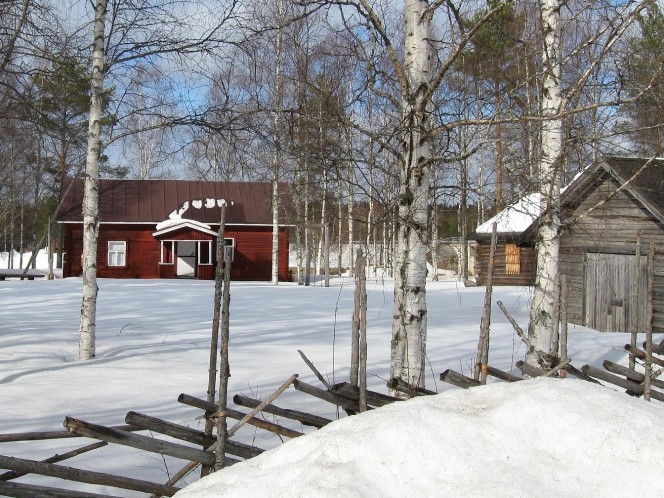
His body was frozen solid when the police broke in. His electricity and gas had been cut off for non-payment. There were empty alcohol bottles around the house. Neighbours reported that Arto had been hit hard by the loss of his job as a construction labourer. Everything pointed to a tragic death, a victim of the recession.
There was only one problem with this conclusion. When the police accessed Arto’s bank records, they found that until recently he had significant savings, but that over the previous two months, Arto had withdrawn all of his savings through the town ATM. Arto had left nothing to show for the withdrawals and the money hadn’t been given to his ex-wife or children. There didn’t seem to be any explanation for how it had been used.
Arto Partanen would have been forgotten. But in early November another body was found in the centre of town, where it couldn’t be ignored.
The second body
In a town the size of Suomussalmi, according to Janne, anyone new is known as an outsider until they’ve lived there at least forty years. Ulla Makkonen was 39 years old, and well-known and liked in town for a blow-in. Ulla had run a beauty salon in the town centre since the mid-80s, just doors away from the police station. She lived above her business.
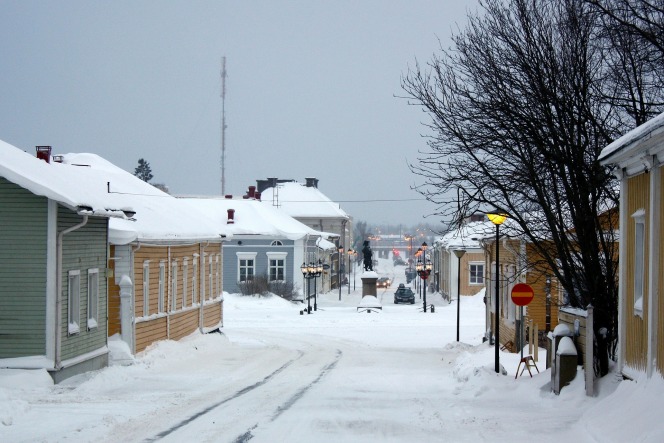
Ulla’s business had been one of the first casualties of the recession. Initially she had seemed to take the loss well. She was regularly seen in the local library studying and was exploring going back to college, but she stopped socialising with friends and withdrew from the local community groups she’d been involved in. In the final months before her death, her friends reported that she’d changed demeanour entirely. She appeared to be losing weight and looked like she hadn’t been sleeping. She turned up on friends’s doorsteps to borrow money that she never paid back. She stopped paying her bills and her electricity and gas were cut off. Her life looked like it was falling apart.
Ulla was found malnourished and frozen to death in her apartment on the day her landlord came to serve her with an eviction notice, a month to the day after Arto Partanen had been found. A follow-up on her bank accounts revealed that she too had withdrawn all her money from her bank account in previous months, again with nothing to show for it. However, despite the similarities of the deaths, there was no evidence to suggest that Ulla and Arto had known each other at all.
According to most locals, police chief Osmo Juntunen was distraught over this death so close to his office. He had personally known and liked Ulla; everyone had. Already known as a man who worked hard, perhaps too hard, Osmo Juntunen reportedly threw himself into trying to solve the riddle of these deaths.
Thanks to Juntunen’s hard work, a week or so later a connection was made between these two very different individuals. It was an unexpected one. It was the town library and the arrival of an outsider to Suomussalmi.
The library and the outsider
The original library in Suomussalmi has now long been closed down. and is now within the council offices. Originally it was a well-kept if limited library with a much-liked librarian, Heikki “Hessu” Ripatti. Ripatti managed to make a small budget go a long way and keep the library as well stocked as possible during the recession. During the peak of the economic crisis in 1992 and 1993, the library was reportedly quite well attended. People seemed to find solace there, an escape into stories from hard times. Fantasy and romance novels were particularly popular. And for those who could barely pay their heating bills, the library was somewhere warm and friendly and free to go during the day.
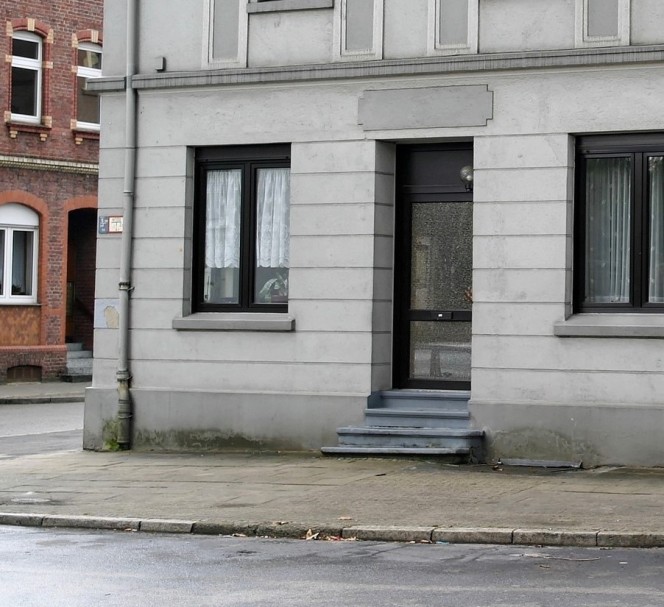
Outsider Johan Tallfors arrived in the town in August 1992. Everyone noticed him. He rented the old paper mill foreman’s place in the forest. Locals described Tallfors to Janne as a tall, thin man with greying hair in his early fifties. He was shabbily dressed. He didn’t have a job, but he seemed to have money. They said he mostly kept to himself.
Sadly, librarian Ripatti died of liver cancer six years ago, so Janne never got to speak to him. He might have best been able to describe Tallfors, because Ripatti told police chief Juntunen that Tallfors came into the library every day for two months. Tallfors would sit reading by himself, scribbling in a little notebook. He was there a few hours a day, five days a week, for two months until he suddenly stopped going there.
During those two months, Ripatti had seen Tallfors talking with both Arto Partanen and later Ulla Makkonen.
Two conversations
These conversations happened nearly a month apart, but there’d been a similar pattern. Both conversations happened in a quiet spot in the corner of the library where no one could overhear them. Both Arto and Ulla appeared to sit and listen intently to Tallfors for about half an hour, until Tallfors abruptly left. Ripatti couldn’t remember all the details, but remembered that Ulla had seemed unsettled and distracted after the conversation, and soon left the library. Both never visited the library again after talking to Tallfors.
Ripatti had little more to tell Juntunen, except for one small detail. He overheard the start of the conversation between Ulla and Tallfors. He had been shelving books nearby and seen Tallfors approach Ulla. According to the most commonly accepted account told to Janne, Ripatti said Tallfors asked Ulla if she wanted to hear a story.
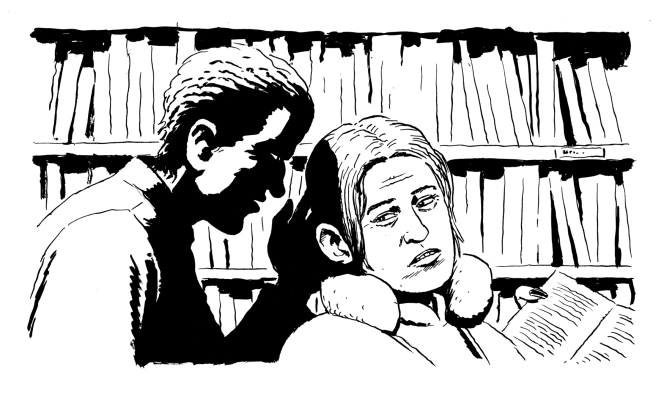 However, these conversations with Tallfors appeared to be another dead end. Police chief Juntunen talked to Tallfors in his home and returned to the police station satisfied that there was no connection between him and this case. Juntunen closed the investigation, saying there was no evidence of foul play. And that might have been the end of the investigation, if it hadn’t been for a senior policeman in the small police station.
However, these conversations with Tallfors appeared to be another dead end. Police chief Juntunen talked to Tallfors in his home and returned to the police station satisfied that there was no connection between him and this case. Juntunen closed the investigation, saying there was no evidence of foul play. And that might have been the end of the investigation, if it hadn’t been for a senior policeman in the small police station.
Janne’s primary source for much of the rest of this account is this former policeman. Janne managed to track him down. He currently lives outside Finland, working as a landscape gardener. He met Janne in a public park and spoke with him for two hours. He spoke reluctantly, on the condition that his name and current location be kept secret. A fan of Al Pacino, he asked Janne to name him after one of Pacino’s iconic roles, so we’re keeping his promise here.
The thirteen
Serpico told Janne that these two deaths would have been forgotten, just chalked up as collateral damage of the recession, if Juntunen’s behaviour hadn’t become erratic in the weeks and months that followed. Juntunen started leaving work at odd times or arriving late. He appeared distracted. Serpico tried to speak to him to find out what was going on, but Juntunen aggressively turned on him, almost physically attacking him.
Serpico was approached by Juntunen’s distraught wife. She couldn’t understand the change in her husband. He wasn’t speaking to her. He wasn’t eating or sleeping. He was withdrawing money hand over fist from their savings. Serpico was the most senior police officer in the team, but he didn’t report any of the problems with Juntunen to head office yet. He was loyal. He wanted to try to help him.
Serpico borrowed a car from a friend and tailed Juntunen. He watched Juntunen withdraw money from an ATM in Suomussalmi and another at a petrol station an hour away, then drive directly to Tallfors’s house. At the door of the house Tallfors took the money from him at the door and led him inside. Serpico waited for half an hour, until Juntunen was pushed out of the front door by Tallfors. Serpico told Janne that even from a distance he could see that Juntunen was crying, pleading with Tallfors. Tallfors didn’t seem to care, just slammed the door on him.
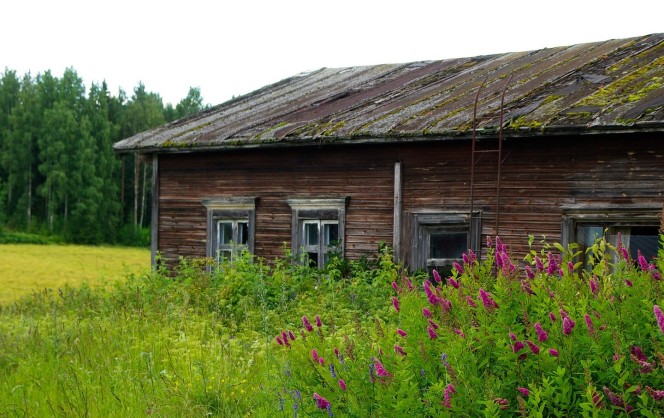
Just as Serpico was about to follow Juntunen’s car away from the house, the local butcher’s van pulled up in front of the house. Serpico watched as Tallfors wouldn’t let the butcher into his house. Serpico watched as the butcher begged and pleaded with Tallfors on his doorstep, but Tallfors slammed the door on him.
Serpico immediately suspected drugs. They’d had drug problems in Suomussalmi before, mainly amphetamines, and the recession had exacerbated this problem. Instead of following Juntunen, Serpico settled in to watch the house from his car. He ended up staying all night. Various locals, men and women, arrived at the house clutching money for Tallfors. They were let inside one by one. Sometimes they’d wait outside, ignoring each other, waiting for Tallfors to let them. And when each one left the house, they appeared to be begging Tallfors for something as if whatever he’d given them it was never enough.
Serpico told Janne he was stunned. All in all, 13 people visited Tallfors that night.
Gathering evidence
Early the next morning, Serpico took his list of names to a neighbour further up the road, waking him. The sleepy neighbour said he’d seen most of the people on the list driving in the direction of Tallfors’ house over the previous two months. He’d also seen Arto and Ulla driving out that way.

On a hunch, Serpico drove straight to Ripatti the librarian’s house and got him before he’d left for work. Ripatti confirmed that all 13 individuals had been regular library users, though he hadn’t seen them for a while. All had been going through hard times. All had been going to the library at the same time as Tallfors, but Ripatti couldn’t say for sure that he’d seen them all speak to him.
Serpico admitted to Janne that he was excited at this point. He thought he might be able to arrest a major drug dealer or maybe some kind of blackmail ring. He knew something off was going on, but one thing confused him.
At the police station, before his colleagues got in, Serpico searched Juntunen’s desk and files and found the notes from his visit to Tallfors’ house. The notes detailed standard police questioning in which Tallfors had been vague about where he was from and what he was doing in Suomussalmi. But the notes ended abruptly, before Juntunen even asked about the deaths.
The last line Juntunen had written was: ‘He says he’s a storyteller.’
The arrests
Janne said Serpico got tense when he got to this part of the story. Serpico didn’t smoke, but he went through a whole pack of gum while giving his account of the last day Tallfors was seen in town.
Within hours of finding the notebook, and having gone without sleep for more than 24 hours, Serpico arranged for policemen from nearby towns to assist him and the three policemen in the station. They convinced 12 of the 13 individuals seen at Tallfors’ house to come to the station for questioning. They couldn’t find Juntunen, but Juntunen’s wife had a black eye. She said Juntunen did it after she told him she’d spoken to Serpico.
None of the 12 would talk to the police about Tallfors. They clammed up. Serpico had them tested for drugs by a local doctor. A few had cannabis in their system, one had amphetamines, but they were largely clean. Nonetheless, threatening them with arrest, Serpico had them held in the police station. He used the few hints of drug use and anything else that looked dodgy to get a warrant for a raid on Tallfors’s premises. He forged his boss’s signature on the paper work. By 2pm that day, he had official authorisation. By 2:30pm, he and his men had smashed down the front door of Tallfors’ house.
The raid
Serpico went into the house first, his gun held out in front of him. He found Tallfors drinking coffee in the small kitchen. There was no one else in the house. Tallfors wasn’t alarmed or surprised at what was happening. Serpico stayed with him while the other men searched the house. He tried to interrogate Tallfors, but Tallfors refused to even respond. Just kept drinking his coffee quietly.
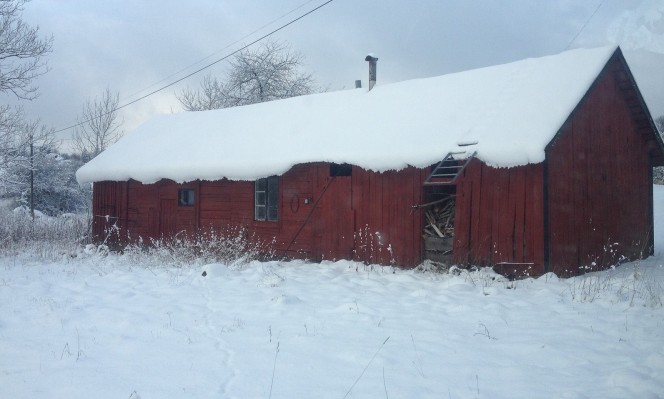
Serpico admitted to Janne that he got very angry at one point. He said he shoved Tallfors around when there was no one else in the room. He asked about drugs, about blackmail. He demanded that Tallfors tell him where Juntunen was. Tallfors responded with a question. Quietly and calmly, he asked Serpico: ‘Do you want to hear a story?’
Serpico told Janne that Tallfors stood perfectly still while he waited for Serpico’s answer. And at that moment Serpico really wanted to hear the story – wanted it more than anything in the world. In a rare moment of openness to Janne, Serpico said that he felt like everything in his life might make some sense if he heard the story – his deteriorating marriage, his difficult childhood – everything would make sense if he could just hear this story.
But Serpico was scared and he told Tallfors ‘No’.
Tallfors shrugged, started to make more coffee. Serpico stayed with Tallfors for the rest of the search, refusing to let colleagues enter the room. He wouldn’t leave anyone else be alone with Tallfors, but never said another word to Tallfors.
Tallfors’ Disappearance
Nothing was found in the house. There was no evidence that there’d ever been any drugs or contraband in the house. Even the money that Serpico had seen given to Tallfors was missing, though that meant little – there were endless places in the woods where it could be hidden. They couldn’t arrest Tallfors.
As Serpico and the others drove away that night, Tallfors stood in the doorway, waving goodbye.
Back at the police station, Serpico released the twelve. All of them gathered money from the town cash point and made their way to Tallfors’s house within a half hour. Serpico followed them at a distance. There Serpico watched as the men and women screamed and cried, as if in pain, when they found the house empty and Tallfors gone. Some of them tore their hair from their heads in their grief. Serpico said he still has nightmares about it.
The third body
Two days later, Osmo Juntunen was found. He was frozen solid, like the others, but that wasn’t the cause of death. He was found in the woods not far from Tallfors’ house. He had hanged himself.

Aftermath
The story became known outside Suomussalmi when a local journalist wrote it up (very luridly, according to Janne) for a now defunct Finnish magazine in 1994. For a while, a few morbid tourists would come to town and visit some of the key sights, but this soon trailed away.
At least six of the twelve who visited Tallfors left Suomussalmi within six months of his disappearance. Of the six that remained, one developed significant psychiatric problems and has been hospitalised for much of the last twenty years; two died of seemingly natural causes; and three are still alive and apparently thriving. Janne approached those three for interviews, of course, but all of them refused to talk to him. One came out of his house with a shotgun and suggested Janne could speak to the shotgun if he wanted someone to talk to. Janne declined.
Serpico was promoted to chief of police within a few days of Juntunen’s death, but he only stayed on for a year. He didn’t want to be in Suomussalmi anymore. He didn’t want to be a policeman anymore. He wanted something simpler. He told Janne that he loves gardening, that he’s always been someone who over-thinks things, but now when he puts his work tools away his work is forgotten. He hasn’t been back in Finland since his last surviving parent’s death in 2007. He doesn’t plan to go back.
Johan Tallfors was never seen again in Suomussalmi. Janne’s attempts to track him down have been unsuccessful and it’s likely he was using a false name. He’s not often discussed in Suomussalmi, but when he is, it’s as a bogeyman figure. Children are told to beware of the “Tarinankertoja” (the storyteller), as he’s come to be known, though they don’t really know what it refers to.
Interestingly, Janne reports that in recent years Suomussalmi has had a kind of resurgence and has become a minor destination for authentic Finnish cultural holidays and nature activities. It has recovered.

Conclusion
Janne is nothing if not careful in his research and was very keen that this piece avoid drifting into speculation. I have done my best to avoid speculation and attempted here to only give the generally accepted facts. No one knows what was going on in that house. There might be a perfectly plausible explanation for what happened that winter that has simply been overlooked.
I have to admit I want to believe the townsfolks’ and Serpico’s account. I want to believe that Tallfors was a storyteller. It fits in with my experience of stories, how they’ve drawn me in so much at times that it’s felt impossible to get away, that sense that I’d follow them anywhere and at any cost, particularly at difficult times in my life. Janne, however, is more rational than I.
Janne points out that in a town like Suomussalmi where many were hit so badly by the recession, people’s lives did fall apart. Janne doesn’t question the honesty of his sources, but suggests that it’s far more comforting for a town to believe that an outsider came along and caused all the damage and broken lives, rather than face up and take responsibility for their own bad choices and mistakes and human failings.
I know what I believe. You’ll have to make up your own mind.
What do you believe?

Well written and very well presented. ..thank you for this.
LikeLike
Chuffed that you liked it Nick! Much appreciate it the feedback!
LikeLike
A very good and interesting detective story. Should be published as a book! Thank you!
LikeLike
Thanks so much Seja! Glad you enjoyed it.
LikeLike
Absolutely riveting, Oran. It combines all the elements I love in a story and is flawlessly written and illustrated. Glad I happened on your site 🙂
LikeLike
Thanks Helena! High praise indeed! Hope you’re doing well with yourself these days.
LikeLike
Great piece- It’s like a real life version of Radiohead’s “Just” video https://youtu.be/-_qMagfZtv8
LikeLike
You’re not the first one to compare it to that. Amazing video. Must have been subconsciously channelling it. Glad you liked the piece. Got great help from my collaborators on it to make it work well.
LikeLike
Yea – maybe some word of mouth version was doing its rounds in the mid 90’s? It’s also clearly the basis of some kind of horror movie waiting to be made – or “Stranger Things” season 2 (combine it with your Famous Five lens)!
LikeLike
Maybe so. We’ll see if Janne ever writes his book and then allows to adapt it as a screenplay 😉
LikeLike
I enjoyed it, thanks. On my phone it took me a bit more than 16 min… 🙂 the story did transport you to a nowhere in Finland and just confirmed my feelings and suspicions that I could never live in the north… To freaky for me, people showing you guns when you want to talk scaries me, the strangeness is chilling…
LikeLike
Ah Mina, you must be a slow reader 🙂 Sorry if reading time not exactly accurate, I try to give it anyone just so people can know what they’re getting into. So glad you enjoyed it. I’m not sure I could live in North Finland either, but only cus it’s too cold for me.
LikeLike
What an amazing story. I was riveted. When is this book out. I want to read it!
LikeLike
This is a superb story, Oran, well told, and crying out to be a book. I hope your friend Janne has great success with the non-fiction version so that someone else can have the craic with a fictional thriller!
LikeLike
Thanks a lot Tara. You’re very kind. Glad you liked it. I spent a lot of time getting it right, particularly the last line…
LikeLike
[…] Are stories addictive?: Finland’s mysterious storyteller […]
LikeLike
[…] a month. Some have been carefully thought through pieces, like my bit of reportage on a series of mysterious deaths in Finland, and some have been thrown together on publication day (like, ahem, this one). Either way, […]
LikeLike
[…] a month. Some have been carefully thought through pieces, like my bit of reportage on a series of mysterious deaths in Finland, and some have been thrown together on publication day (like, ahem, this one). Either way, […]
LikeLike
Loved reeading this thank you
LikeLike